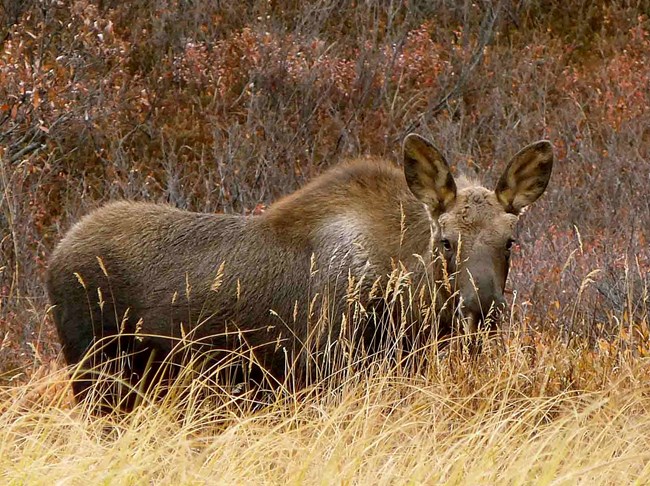
Moose are an integral component of terrestrial systems in Alagnak Wild River, Aniakchak National Monument and Preserve, Katmai National Park and Preserve, and Lake Clark National Park and Preserve. During cycles of high abundance, this species has the potential to influence structure and function of terrestrial systems both through its browsing effects on vegetation communities and through its role as a prey species. Thus, tracking abundance and distribution of moose provides important information on dynamics of terrestrial systems. Further, the bull-to-cow ratio is useful for monitoring their reproductive potential. Moose are an important subsistence and cultural resource to local Native Alaskans and provide significant recreational opportunities for resident hunters. Changes in numbers and distribution of moose are anticipated in response to climate induced changes in their habitats.
National Park Service staff have worked in cooperation with Alaska Department of Fish and Game to conduct annual fall surveys of moose in established trend count areas (TCAs) since the 1970s. Aerial surveys of moose TCAs sometimes lacked consistent application of methods and did not account for sightability. More rigorous surveys are needed to minimize sampling error and enhance comparability of long-term data for the purpose of managing moose harvest and understanding plant-herbivore-predator interactions.
This vital sign is not currently active, but may be implemented in the future.
Last updated: December 8, 2025
